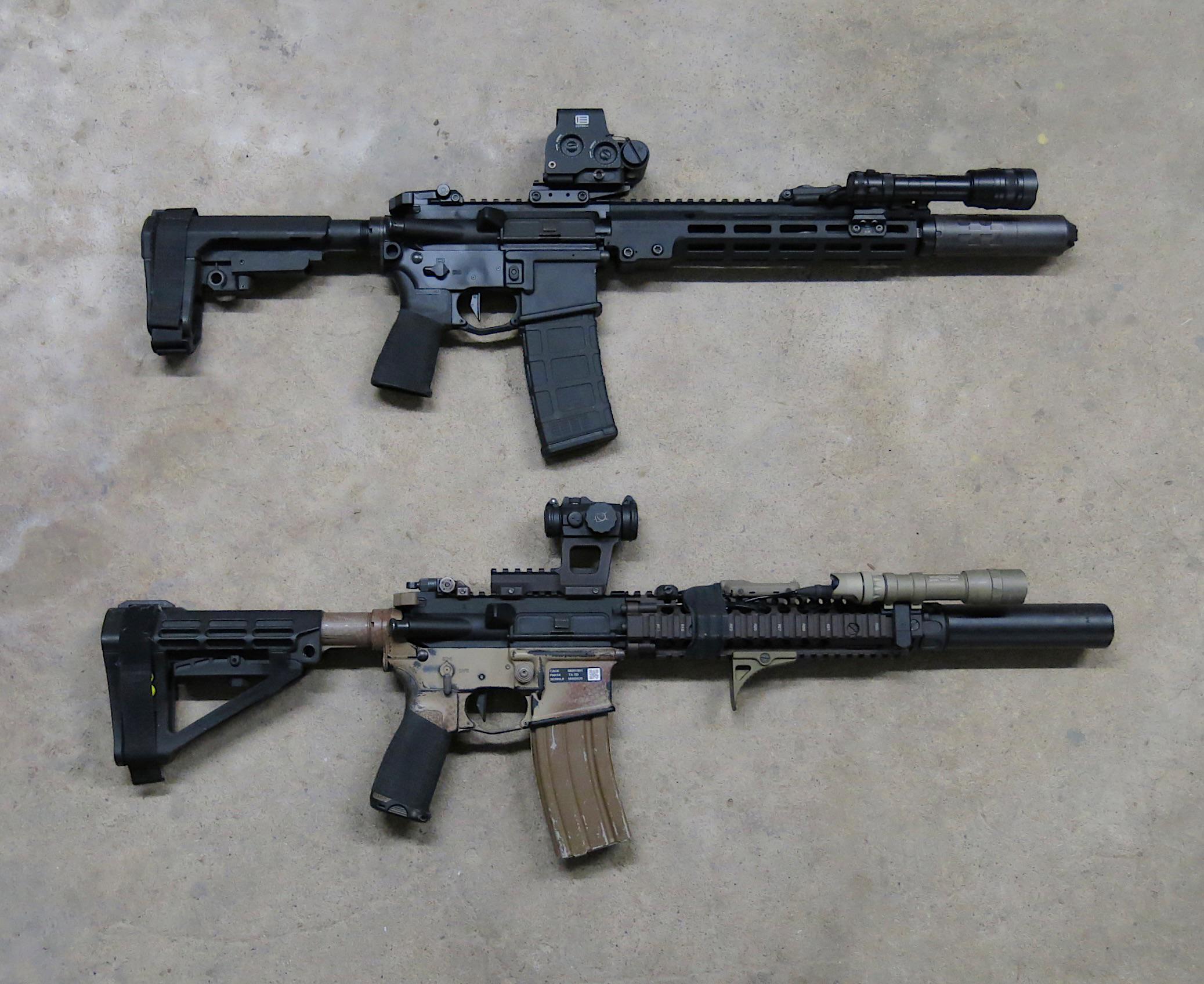
When it comes to choosing between a 10.5-inch and an 11.5-inch barrel for a 5.56 rifle, the debate often revolves around performance, reliability, and intended use.
While the difference of one inch may seem negligible at first glance, it can have meaningful implications depending on the shooter’s needs.
Let’s break it down based on input from industry professionals and experienced shooters.
Performance Differences: Muzzle Velocity and Terminal Ballistics
One of the most significant factors influenced by barrel length is muzzle velocity. A general rule of thumb is that every inch of barrel length adds or subtracts around 20-30 feet per second (fps) to the projectile’s velocity. This increase in velocity affects the terminal ballistics, meaning how the bullet performs upon impact.
11.5” Barrel: Provides slightly higher muzzle velocity, which improves fragmentation, penetration, and accuracy at longer distances. This is particularly beneficial when shooting heavier rounds like 62-grain and 77-grain bullets.
10.5” Barrel: The lower velocity slightly limits fragmentation and overall ballistic effectiveness, particularly beyond 200 meters. However, at close quarters, it remains lethal and effective.
For shooters looking to maximize range and effectiveness, the 11.5-inch barrel is the superior choice. If compactness is the main priority, the 10.5-inch barrel still performs well in CQB scenarios.
Reliability and Recoil Management
Dwell time—the time the bullet spends in the barrel after passing the gas port—affects the rifle’s recoil impulse and cycling reliability. A longer barrel increases dwell time, which can make a noticeable difference in performance:
11.5” Barrel: Smoother recoil impulse, improved reliability, and reduced wear on internal components. Less finicky with weaker ammo.
10.5” Barrel: Snappier recoil, increased wear on parts, and sometimes more finicky with lower-powered ammunition.
A longer dwell time helps with smoother cycling and reduces the risk of malfunctions, making the 11.5-inch a more forgiving option across different ammunition types.
Compactness and Maneuverability
One of the key advantages of a shorter barrel is increased maneuverability in tight spaces. In close-quarters battle (CQB) situations, a compact rifle can make a real difference.
10.5” Barrel: Better suited for vehicle use, home defense, and confined spaces where every inch matters.
11.5” Barrel: Still compact, but offers a better balance between size and performance.
As one industry expert put it: “An inch less snag and an inch less drag can make all the difference in tight spaces.” However, in practical applications, the additional inch doesn’t drastically impact maneuverability unless extreme compactness is the priority.
Suppressor Considerations: Gas Blowback and Fouling
For those running suppressed setups, the extra inch can influence gas pressure and overall shooting experience.
10.5” Barrel: Tends to have more gas blowback, which can lead to increased fouling and a harsher shooting experience when suppressed.
11.5” Barrel: Less gas blowback, making it a better choice for suppressed shooting.
If you frequently shoot suppressed, the 11.5-inch barrel is the preferred option due to better gas management and reduced fouling.
Ammunition Considerations
Ammunition selection plays a role in how much of a difference the extra inch makes. If using MK262 (77-grain) or heavier bullets, the extra velocity from an 11.5-inch barrel helps maintain ballistic stability. Conversely, if using standard 55-grain or lower-quality bulk ammo, the benefits of the longer barrel are slightly less pronounced.
High-quality ammo (e.g., MK262, 77-grain OTMs): Performs better in an 11.5-inch barrel.
Lower-quality bulk ammo: More noticeable performance drop in a 10.5-inch barrel.
Final Verdict: Which One Should You Choose?
So, does an extra inch really make a difference? The short answer is yes, but how much it matters depends on your priorities:
If you want the most balanced option with improved performance, reliability, and suppression, go with the 11.5-inch barrel.
If you need maximum compactness for CQB or vehicle use, the 10.5-inch barrel is still an effective choice.
If suppressor use is a factor, the 11.5-inch barrel is the better pick due to reduced gas blowback.
For most shooters, the 11.5-inch barrel is worth the extra inch. The slight increase in length provides noticeable benefits in reliability, ballistic performance, and overall shooting experience, making it a well-rounded choice for a variety of applications.
What’s Your Take? Do you prefer a 10.5-inch or an 11.5-inch barrel for your 5.56 rifle? Let us know your thoughts in the comments below!
RELATED – M855 vs M193: Which 5.56 NATO Round is Best for Your AR-15?
Stay tuned to The Gear Bunker and be a part of this all veteran-owned website. And be sure to subscribe to our Facebook, Instagram, and YouTube channels. Sign up to be notified on YouTube ensuring you’ll know immediately when new content is uploaded.
Check out our new Affiliate Partner Page.
Visit our Amazon Storefront for more related items.

Leave a Reply